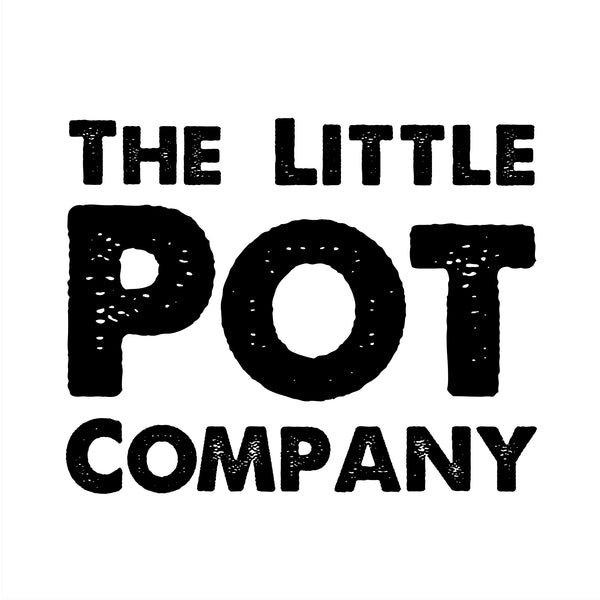Stoneware Pottery - Is it safe? Does it break? Stoneware Q&A
Share
When I checked Google for the term 'stoneware pottery' I noticed a few interesting questions pop up in the related searches box. I thought I'd try and answer some of those questions in one super helpful blog post!
Is stoneware safe to use?
Stoneware is one of the most common forms of pottery in use today. It is fired to a high temperature, making it very durable. All potters and ceramic manufacturers should be making food safe glazes for their stoneware. If in any doubt, get in touch with the manufacturer to check if their stoneware is food safe.
Which is better stoneware or ceramic?
Stoneware clay is a type of ceramic material, therefore it's not possible to say which is better. Other commons types of ceramics used in pottery making are earthenware and porcelain.
Are stoneware plates safe?
Any potter or stoneware manufacturer that are making plates should be using glazes that are food safe. The biggest concern for pottery safety is the leaching of hazardous glaze ingredients into food.
If you are concerned about the glazes, ask the potter about what ingredients are in the glazes, and if they have done any leach testing on their pottery. Any decent potter should be happy to say what ingredients are in their glazes, even if they don't give away their recipes with precise quantities.
Is stoneware or porcelain better?
Stoneware! I may be a bit biased as I produce stoneware pottery :)
I've just read a couple or articles around this subject. It seems they were written by people without much knowledge of ceramics. I'd like to dispel a few myths on the subject.
Porcelains appeal since its discovery is its ability to be produced in very thin and delicate forms. The holy grail of porcelain making was to produce a ceramic you could see light through. Many people seem to think all porcelain must be produced very finely and glazed in white. In fact, you could just as easily make a really thick and heavy black pot in porcelain as you could in stoneware.
Stoneware is stereotyped as rustic looking, often with speckles of iron showing through the glaze or unglazed body. My pottery pretty much fits this pigeon hole. Stoneware can be white and made very fine though, it just depends what the potters style is.
One benefit from a potters point of view of stoneware is it's considerably cheaper to buy, and matures at a lower temperature than porcelain which saves on kiln fuels costs. Stoneware is also regarded as easier to work with on the wheel and for hand building.
Is stoneware safe for oven?
Most stoneware will be fine for use in the oven. During its manufacture it will have been baked to around 1260 Celsius, so a standard oven temperature wont trouble it. Certain types of stoneware have been designed to be especially capable for oven use.
The important thing is to not apply direct heat to stoneware, or any other ceramics - heating them on a stove top will almost certainly crack them. By heating the base of the pot more than the top, the stress of heat difference results in cracks. In the oven the heat is all around so very unlikely to break your stoneware.
Does stoneware chip easily?
Stoneware is one of the most durable types of ceramic. Whether it will chip easily is very dependant on the clay and glaze used during manufacture. The clay and glaze should expand and contract during firing at a similar rate. If not, the glaze can be under contraction and more likely to chip. All things being equal Stoneware is no more likely to chip than any other type of ceramic.
Does stoneware break easily?
Like all ceramic materials, stoneware can break fairly easily when dropped on a hard surface such as floor tiles. If it's not subjected to sudden impacts it will last indefinitely, many generations can have the use of a cup or bowl.
Can stoneware be microwaved?
The most common cause of ceramic breakages in microwaves is when the pottery is absorbent. Earthenware is not suitable for microwaves or dishwashers as it is a low fire ceramic. Water soaks into its structure, expands during heating and cracks the pot.
Most stoneware that is fired to maturity is fine for use in microwaves as it absorbs very little water. It is safest to check with the manufacturer in case it is low fire stoneware though.
What is the difference between stoneware and pottery?
The term pottery is generally used to describe the three main types of ceramic used to make household items. The three being Earthenware, Stoneware and Porcelain. So there isn't really a difference between the two, stoneware is a type of pottery.
How do you make stoneware pottery?
The stoneware clay itself can be dug straight from the ground, but more commonly it is composed of a mixture of raw ingredients. These include fire clay, ball clay, grog, flint and feldspar.
To make a stoneware item, the form is produced either on a potters wheel, building by hand, or casting a slip. Once dried it is often 'bisque' fired in a kiln to around 1040 Celsius. After this it's usually decorated with glaze and kiln fired again to around 1280 Celsius.
What colour is stoneware clay?
Stoneware clay bodies come in a variety of different colours such as off white, tan, red or even black. By using different coloured glazes on the surface, the finished pot can be any colour the potter desires.
